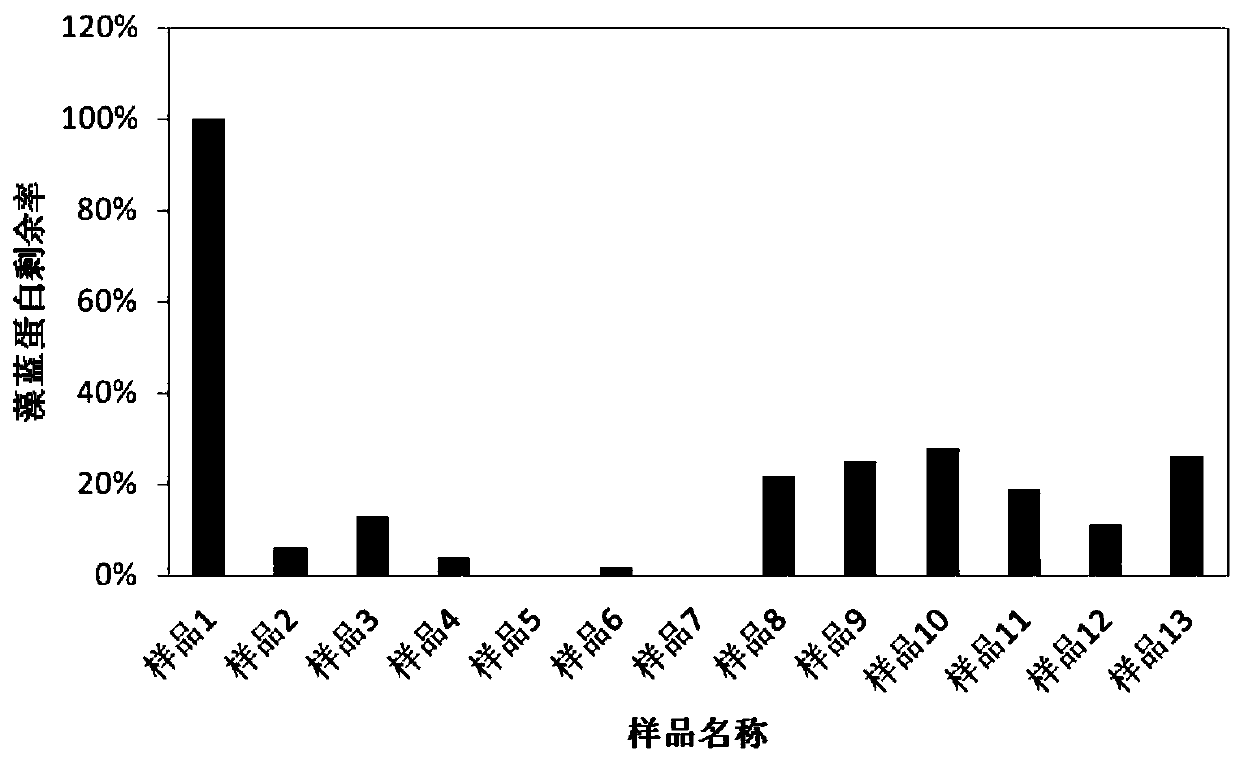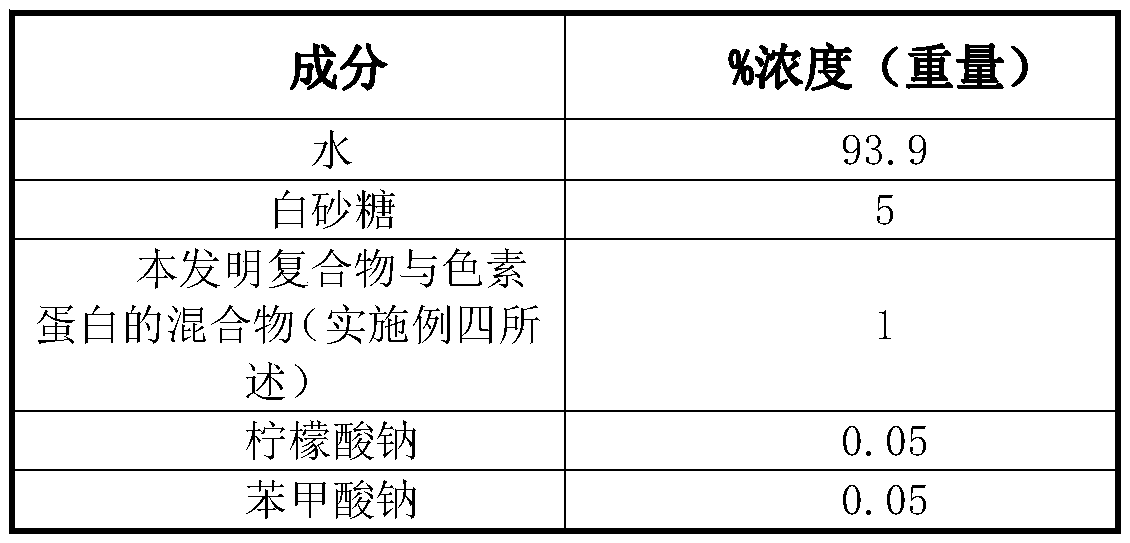A compound for improving the photostability of pigment protein and its application
A pigment protein and photostability technology, which is applied in applications, medical preparations containing active ingredients, food science, etc., can solve the problems that the stabilization technology and method need to be developed, and cannot meet the requirements of phycocyanin photostability, etc. To achieve the effect of eliminating adverse effects
- Summary
- Abstract
- Description
- Claims
- Application Information
AI Technical Summary
Problems solved by technology
Method used
Image
Examples
Embodiment 1
[0039] Example 1: Compound preparation and comparative test for improving the photostability of phycocyanin (see the appendix figure 1 )
[0040] 1. Experimental platform
[0041] Xenon lamp aging instrument, the wavelength range is 290nm-800nm, the experimental condition is 340nm, the irradiation intensity is 0.35W / m2, the blackboard temperature is 45℃, and the light irradiation is 6h, which can simulate the shelf life of 6 months. Visually observe color and appearance, and detect absorbance at 620nm.
[0042] 2. Light protection effect
[0043] Phycocyanin 400ppm, dissolved in deionized water, placed at 4°C, protected from light, as a control, standard sample 1;
[0044] Phycocyanin 400ppm, dissolved in deionized water, subjected to xenon lamp aging, is sample 2;
[0045] Phycocyanin 400ppm, vitamin C 100ppm, dissolved in deionized water, subjected to xenon lamp aging, sample 3;
[0046] Phycocyanin 400ppm, arginine 100ppm, dissolved in deionized water, subjected to xen...
Embodiment 2
[0060] Example 2: Preparation of a compound for improving the photostability of phycocyanin
[0061] Weigh 5g of glycine, 1g of vitamin C, 0.6g of phycocyanin, and 92g of xylooligosaccharide, dissolve in 1L of deionized water, stir to dissolve, pre-freeze at -45°C, and sublimate under reduced pressure at 20°C to obtain a mixed freeze-dried powder. The mixture can be applied in any formulation of food, cosmetics, providing active or blue shade. It is prepared into an aqueous solution containing 400 ppm of phycocyanin, and according to the xenon lamp aging method of the present invention, the residual rate of phycocyanin is 35%.
Embodiment 3
[0062] Example 3: Preparation of a compound for improving the photostability of phycocyanin
[0063] Weigh 1 g of glycine, 1 g of sodium ascorbate, 2 g of phycocyanin, and 96 g of trehalose, dissolve in 1 L of deionized water, stir to dissolve, pre-freeze at -45°C, and sublimate under reduced pressure at 20°C to obtain a mixed freeze-dried powder. The mixture can be applied in any formulation of food, cosmetics, providing active or blue shade. It is prepared into an aqueous solution containing 400 ppm of phycocyanin, and according to the xenon lamp aging method of the present invention, the residual rate of phycocyanin is 39%.
PUM
 Login to View More
Login to View More Abstract
Description
Claims
Application Information
 Login to View More
Login to View More - R&D
- Intellectual Property
- Life Sciences
- Materials
- Tech Scout
- Unparalleled Data Quality
- Higher Quality Content
- 60% Fewer Hallucinations
Browse by: Latest US Patents, China's latest patents, Technical Efficacy Thesaurus, Application Domain, Technology Topic, Popular Technical Reports.
© 2025 PatSnap. All rights reserved.Legal|Privacy policy|Modern Slavery Act Transparency Statement|Sitemap|About US| Contact US: help@patsnap.com



